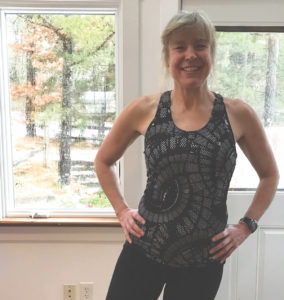Surprise, surprise: working out at home is predicted to be one of the biggest fitness trends of 2021. Already in this year, finding strength training equipment has been a challenge. There has been a shortage of free weights since March. But the good news is there’s an alternative that’s cheap, simple, and won’t take up half the living room: resistance bands. They are a really good way to add variety and challenge to your routine.

Bands come in different styles — there are flat ones, tubing, and loops. Accessories such as handles and door attachments make them more comfortable and versatile to use. If you set things up just right, you can train any muscle, doing exercises that look just like the ones you do with gym equipment.
In fact, the elastic bands offer more options as far as body position goes than the machines do. So, you can use them to make your muscles work in new and different ways. Although the load may not be heavy enough for bodybuilders, lifting done with bands will challenge your muscles in a different way than dumbbells. Weights feel heaviest midway through the motion (around 90 degrees for a bicep curl), while the workload with bands is greatest at the end of the motion (using that same bicep curl as an example, that would be when your fist is up by your shoulder).
Get the most out of your moves by pulling against the elastic resistance, but also by resisting the recoil as you return to the starting position, improving muscle strength in both the shortening and the lengthening phases of the exercise.
The resistance levels of bands vary, but they usually come in sets with each color providing a different level of difficulty. It’s a good idea to start with a set of three or more bands so you’ll have a range of resistance to choose from. I would recommend a set of long bands or tubing for the upper body and a set of loops for the legs.
A well-rounded routine will include two or more exercises each of pushing, pulling, and leg strength. These will also require core stability, and you can increase the challenge by choosing positions such as kneeling or standing on one foot. Put them together in a circuit — moving quickly from one to the next — and you’ll keep your body warm and your heart rate up.
Here’s an example of one circuit of push, pull, and legs. Start with 2 sets of 8 to 15 repetitions each.
- One arm chest press: This works the pecs (pectoral muscles) as well as the back of the upper arm (triceps). Wrap the band around your upper back, and bring it forward under your arms, holding the ends in your hands. Rest your left hand on your chest and hold your right arm up, palm facing away from your body. Step forward with your left foot as you push your right arm straight out in front of you as though you’re stepping into a punch. Step back with the left foot as the arm returns to starting position. Finish all reps, then repeat on the other side.
- Wide grip lat pull downs: The lats are the big V-shaped muscle in your back; they are important to your core strength. Grasp the ends of the band with hands about shoulder-width apart and arms extended overhead. Stand tall with your abdominals tight. Pull your arms down and out to the sides until they reach shoulder height, keeping elbows straight. Pause, then return to your starting position with arms overhead and complete your reps.
- Leg half circles: You’ll use a loop band for this one. It works all your hip muscles, but especially the glutes (the gluteal muscles) — it will definitely warm your buns! Place a loop band around your ankles. Stand on one foot, holding onto a countertop for balance if needed, and slowly move the other leg in a semi-circle. Start from the front, circle out to the side, then around to the back, and return to start. Do all reps on one side first, then switch to the other leg.
Of course, every one of these is even more fun if you listen to “The Rubberband Man” (the Spinners, vintage 1976) while you work this plan. They’ll tell you, “Just move it.”



